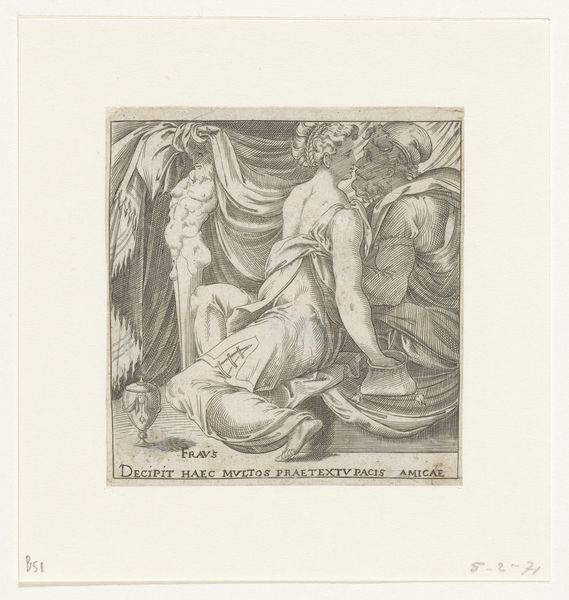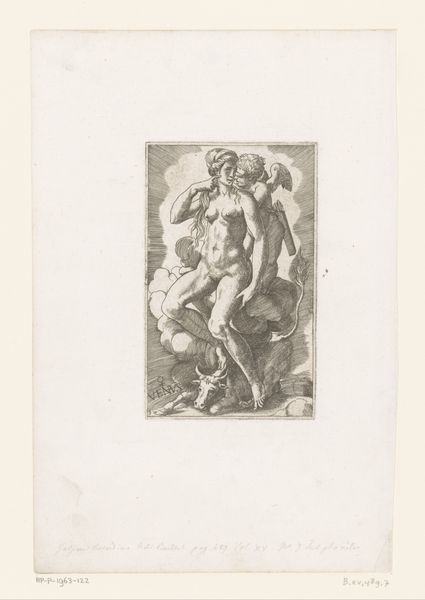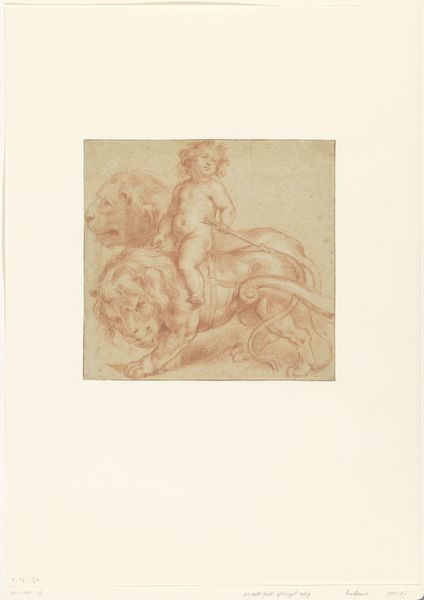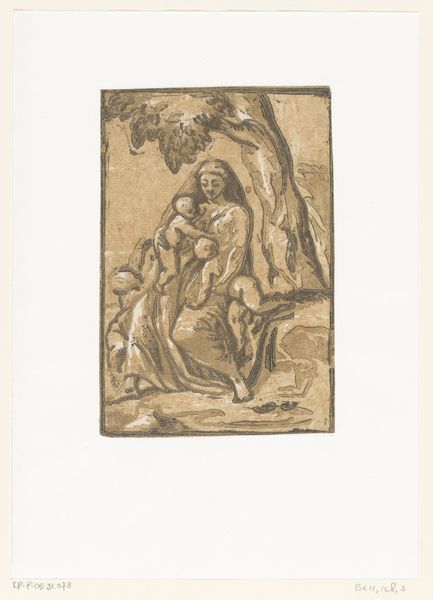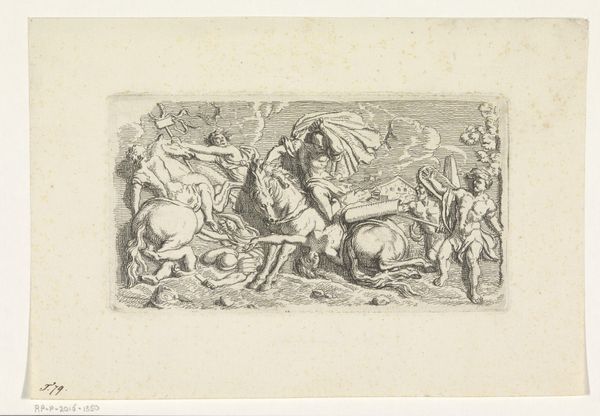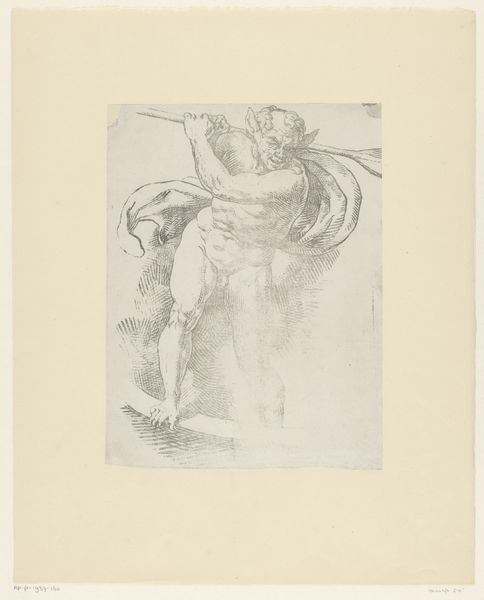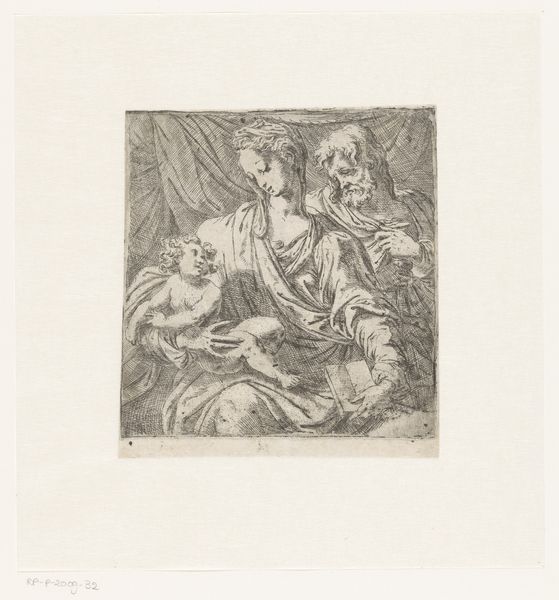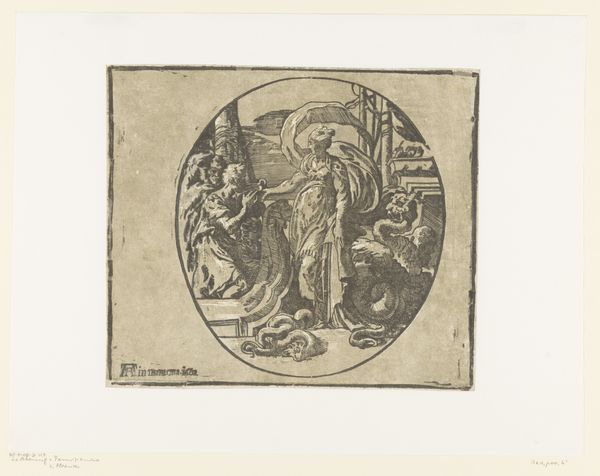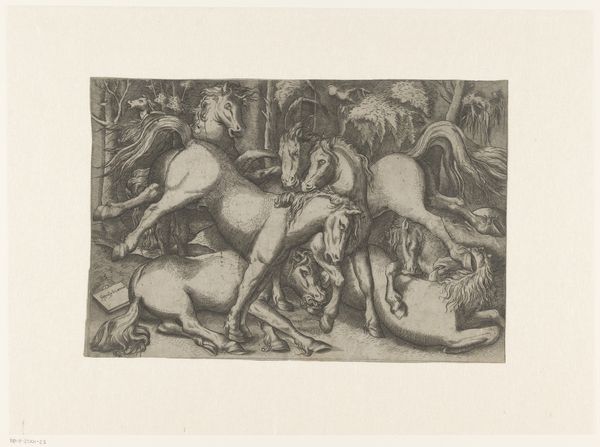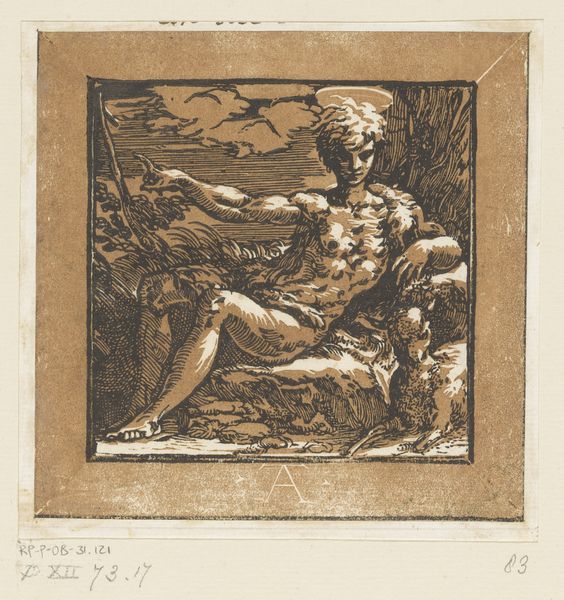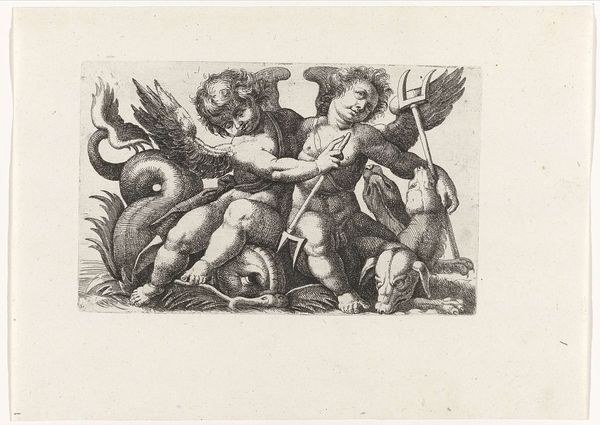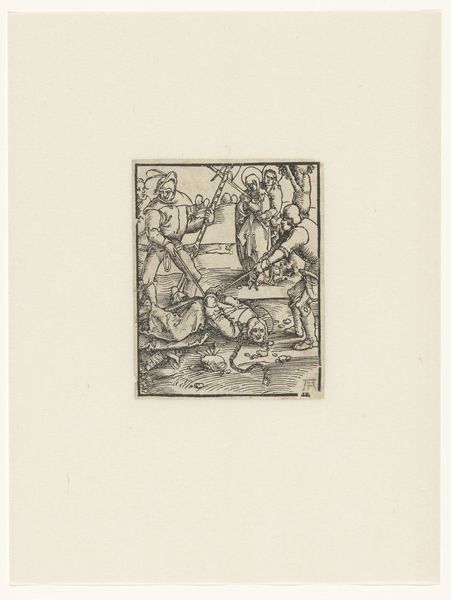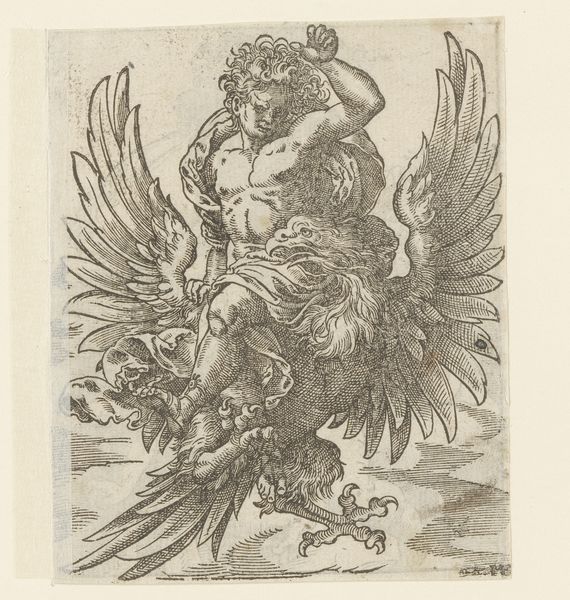
print, paper, engraving
#
allegory
#
ink paper printed
# print
#
old engraving style
#
figuration
#
paper
#
11_renaissance
#
history-painting
#
engraving
Dimensions: height 75 mm, width 75 mm
Copyright: Rijks Museum: Open Domain
Curator: Look at this arresting print by Enea Vico titled "Kracht," which translates to "Strength," dating back to somewhere between 1533 and 1567. It’s currently housed here at the Rijksmuseum. Editor: The immediate impression is one of controlled power. The stark contrast of the engraving, the central figure seated on a lion... It's all quite dominating, really, in spite of its modest scale. Curator: Precisely. The engraving presents an allegorical figure of Strength, who carries the weight of the world –literally. In her left hand, she holds a globe. It symbolizes dominion and authority but consider also the burden this figure has to bear. She's not just strong, she is responsible. Editor: And notice how that responsibility is embodied by the lion, that classic symbol of sovereignty but also untamed force. Here, however, the beast is subjugated; adorned and posed as a vessel. Does it suggest something about power being reliant upon oppression? How strength is performed by subduing the natural world around you? Curator: It is more about transforming natural energy into something productive and reasoned. Think of the torch in the figure's right hand, usually meant to be guiding action and conduct. It directs, as the globe represents civilization. It shows that this allegorical “Strength” is about leadership, reason, and control over not just others, but yourself. Editor: Self-mastery used as an ideological justification for dominance; that’s exactly the reading I would expect from the Renaissance. I wonder about this lion being forced to wear ornamented bling. It has an element of tragedy, to me. The face almost seems forlorn! Curator: Perhaps it is meant to display power’s cost: to both ruler and ruled, lion and… well, all of us. Editor: It gives me much to consider when we reflect on strength and justice. Power is very rarely evenly distributed, it's rarely equalizing. Curator: Right, that perhaps visible power demands some form of subjugation or obedience to properly operate, especially back in Renaissance sensibilities, like here, shown on the surface of an artwork like this.
Comments
No comments
Be the first to comment and join the conversation on the ultimate creative platform.
